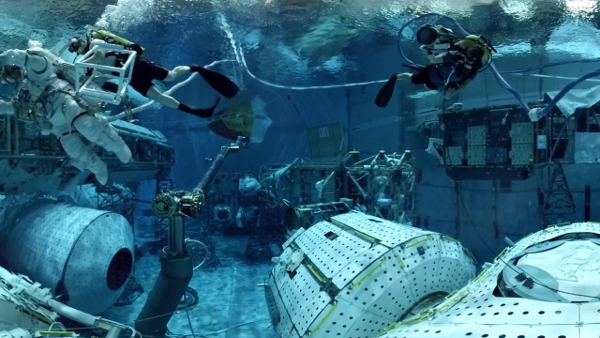India’s world-class facility for training astronauts will come up not in the space headquarters in Bengaluru, nor in any glitzy metropolis. It will be established in three years at Challakere, a shrubby, arid oilseeds town on the Bengaluru-Pune NH4 in Chitradurga district of Karnataka.
The Indian Space Research Organisation (ISRO) has proposed a ₹ 2,700-crore master plan to create top infrastructure that will house its young Human Space Flight Centre (HSFC).
K. Sivan, ISRO Chairman and Secretary, Department of Space, told The Hindu, “Everything connected with events and planning of the HSP [Human Spaceflight Programme] will shift to our campus at Challakere. We want to establish a self-contained facility there so that in future, whatever training and activities we are now doing in Russia for the Gaganyaan crew can all be done by us here.” When ready, the 400-acre ISRO land at Challakere will be the single-stop consolidating infrastructure and activities related to space travellers.
Hefty sum
The country pays a hefty, unnamed sum to use such facilities abroad. The first set of four astronaut candidates for the first Gaganyaan mission of 2022 are to train in Russia.
The amount sought for the HSFC is over and above the ₹10,000-crore approved budget of Gaganyaan. Pending its approval, the centre may take 2-3 years at the earliest to be set up, but would come up after the first Indian crewed flight.
Scattered across centres
Currently, HSP work is split across various centres such as the Vikram Sarabhai Space Centre in Thiruvananthapuram and the U.R. Rao Satellite Centre in Bengaluru. The Institute of Aerospace Medicine of the Air Force has been roped in for their selection, basic and final training in Bengaluru.
Apart from all this work, Challakere will also host work related to crew and service modules of the spacecraft that carries the astronauts and up to mission control.
Many more missions
Such full-fledged facilities, Dr. Sivan said, were needed within the country as the HSP would not be a one-time affair with one Gaganyaan project. “We are going to have a sustained HSP and will need a large number of facilities for training [future] astronauts.”
The ISRO has sought the amount outside the ₹10,000-crore budget of Gaganyaan and awaits the government’s approval of its proposal.
The HSFC was formally announced in January 2019 and works from a temporary place at the ISRO headquarters, Antariksh Bhavan.
S. Unnikrishnan Nair has been named its Founder-Director and R. Hutton the project director of Gaganyaan. Beyond that, the centre is tasked with pursuing future human space missions, complete mission planning, developing engineering systems for survival and safe return of the crew from space, as also selecting and training the astronauts.
Quarantine unit
Human-focussed infrastructure apart, the ISRO also planned to add a quarantine facility at the second launch pad (SLP) in the Sriharikota space port. Dr Sivan said it would ensure that astronauts who were about to enter the spacecraft before the launch stay unexposed.
Among many human-rated projects, the SLP and the launch vehicle GSLV-MkIII will also be modified suitably for crew safety and comfort.
The Science City
Challakere, about 400 km and over three hours by road from Bengaluru, is also where premier scientific establishments have set up adjoining and interactive campuses on some 10,000 acres. Called the Science City, it houses facilities of the ISRO, the Defence Research & Development Organisation’s Advanced Aeronautical Test Range, the Bhabha Atomic Research Centre and the Indian Institute of Science.
Four candidates
Four male pilots of the Indian Air Force in their 30s and early 40s are scheduled to leave for Moscow in the third week of January to train at the Yuri Gagarin Cosmonaut Training Centre for 15 months as candidates for Gaganyaan.
They were selected through basic fitness and health tests at the IAF’s Institute of Aerospace Medicine in Bengaluru. In Moscow, they will learn the skills of life and survival in a narrow capsule, before, during and after travelling away from earth’s gravity while managing the travel around earth.
Source: The Hindu
You may also like
-
Dot Simplifies Approval Processes For Telecom Licenses And Wireless Equipment
-
PM to Inaugurate SEMICON India 2024 on 11th September
-
Shri Piyush Goyal Sets 500 Million Tonnes Domestic Steel Production Target by 2034
-
NHAI to Track Around 100 Toll Plazas with GIS-Based Software for Seamless Movement of Traffic at National Highways
-
“Marching Towards Building A Digitally Connected Bharat and An Atmanirbhar Telecom Sector”: Union Minister Jyotiraditya Scindia
